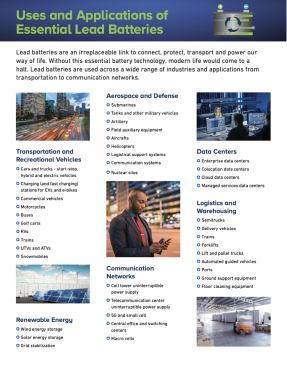Batteries provide essential energy for both mobility equipment and power sports, enabling personal independence and outdoor recreation. From wheelchairs and motorized scooters that enhance mobility to ATVs, watercraft, and RVs that fuel adventure, reliable lead and lithium battery technology keeps people moving—on the road, trail, and water.
Lead Batteries Are Revved and Ready to Power Summer...
As the temperatures and COVID vaccination rates soar, Americans are itching for summer vacations. Advanced lead batteries are ready to...
Article
May 7, 2021













